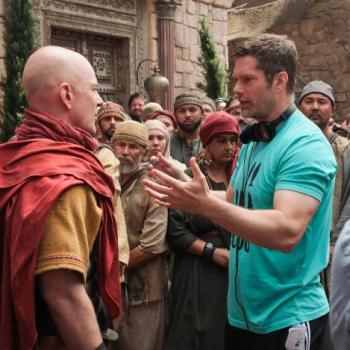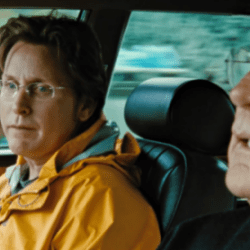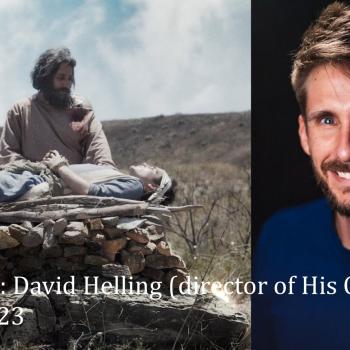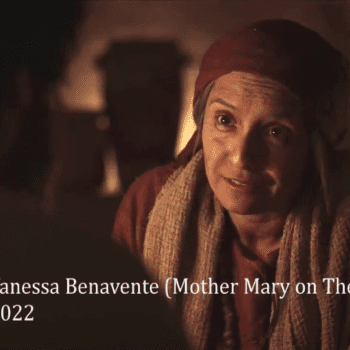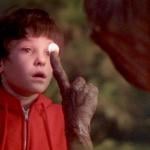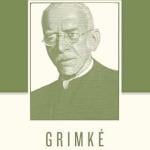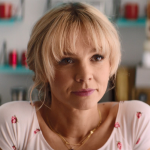My junket report on The New World — part review, part interview with producer Sarah Green and co-stars Q’Orianka Kilcher and Christian Bale — is now up at CanadianChristianity.com.
UPDATE: It occurs to me that there were lots of good quotes in those roundtable interviews that, for various reasons, I did not get to use in my article. So hey, why not toss some of ’em off here.
First up, Kilcher on the vast changes that took place between the shooting of the film and the final, edited version:
We actually shot, like, two million feet of film or something — it was something really big like that — and so we had no clue what to expect. Yeah, in my mind, I kind of pieced all the scenes together and made a little movie in my head, but due to the time of 2 hours and 15 minutes that you’re allowed for the film, unfortunately lots of things were cut out. I’m excited for the DVD. It’s going to be a long DVD! . . .
It was really sad that so many scenes had to get cut out, because there are some scenes that I was really looking forward to seeing in the film, because I think that it shaped the way you would look at Pocahontas, in times of the lowest time when she went in her life, and they cut lots of when Pocahontas was younger. So the movie, yeah, Terrence’s cut is good of it, it’s just that you have all these other memories of different scenes you cut.
In hindsight, Kilcher’s reference to “2 hours and 15 minutes” is very interesting, because that is how long the film is now — but at the time, the only version of the film that anyone in the room had seen was 2 hours and 29 minutes long. Did the actors already know, even then, that a shorter version was in the works?
Next up, producer Sarah Green on the limits that she and director Terrence Malick imposed on the film’s “realism”:
One great difference that we did of course is that the women were topless in that tribe, which we chose not to do because we wanted everyone to be able to see this movie. . . .
Even when we were looking at older women to play Pocahontas, we never intended to do more than that. Partly it’s Terry’s and my taste, and we wanted everyone to be able to see this movie, including young girls, so we never even considered making it seamier than that, nor bloodier than that. Not everyone feels that that is appropriate. Personally, I feel a huge emotional impact from that battle sequence, with almost no blood. And you never see a plunging knife or anything. You feel it and hear it, and I think I don’t need to see more than that.
Green again, on the scene in which Pocahontas “saves” John Smith:
We spent a lot of time with the elders of the Virginia tribes that are existing today, and talking with them about some of their oral traditions, and how she would have expressed herself, but also what some of these classic events — like her saving him from death — what that might have meant. And one of the things we learned is that, yes, we don’t know, he might have had his life in danger, he might well have been about to die and she might have thrown herself upon him, [but] it might well have also been a tribal ritual that was a death and rebirthing in order to control this new tribe that had come into Powhatan’s land, and that’s how they would have done it. They would have inducted the leader into their tribe, and made them subjects. So we tried to shoot things in a way that allowed you to interpret — ritual, reality, what is it?
This is a fascinating comment, and I wonder if we ought to be comparing this scene to the later scene in which Pocahontas is baptized by the English. If we understand Pocahontas’s baptism as an expression of social conformity rather than spiritual rebirth — and I haven’t a clue what side the historical Pocahontas would come down on this, or the filmmakers for that matter — then it may be fair to say that the film draws a parallel between the Natives and the English by indicating that both groups had rituals for trying to control foreigners and make them their subjects.
Next up, Christian Bale on whether he had fears about landing on the cutting-room floor, similar to what happened to Adrien Brody in Malick’s previous film, The Thin Red Line (1998):
What you see in the movie is not what I had structured in my mind, of, “Oh, at this point I have to become somebody that the audience knows more about, somebody that Pocahontas is beginning to admire and recognize a friendship with, etc.” There would have been many other scenes in between that. And also there were many times where we would shoot scenes and we would have no idea where it would end up in the movie. It was just something that you give to Terry, and he’ll use it or not use it as he wishes. So actually sitting down and watching this movie — even though I knew that I wouldn’t be able to be cut from it entirely, because it is linear and Rolfe, y’know, does become a pivotal role in the end — I wasn’t surprised whether I had been in there for 45 minutes or 2 minutes, very briefly. I think that’s just part of what you accept when you’re dealing with Terry and the way that he works, and I love the way that he works. It’s nice just to be involved, even if in a small manner, in what I see to be a truly wonderful movie, and very very unique, and I would do it again in a shot, even if he cut me down to nothing, again, because he’s just a very enjoyable personality and soul to be around.
Finally, Wes Studi gave one of the most entertaining roundtable interviews I have ever attended, partly because he didn’t care for the movie much, so he felt free to criticize it.
He said he took the role of Pocahontas’s uncle because he wanted to work with the Native language that was reconstructed for the film, but almost none of it ended up in the final cut.
With those elements removed, he said the film was “really not my cup of tea”, and he said the film had “no perspective” because three different characters are given voice-over monologues, but after saying all that he said — possibly semi-ironically — that it was still “a beautifully done cinematic wonder.”
First, he comments on the fact that there is a separate casting director for Native American actors listed in the credits:
WS: Have you ever seen “Hispanic casting”? “Asian casting”?
PTC: I’ve seen “Canadian casting”.
WS: Well, I don’t know if we want to be put in that category — with the Canadians, I mean.
Next, he comments on what it was like to work with Malick:
WS: Let me say this: I heard the word “cut” maybe three times.
Reporters: [ laughter around the room ]
WS: Have you heard this before?
Reporters: No! . . . I could have guessed it! . . . I wanted it!
WS: It’s a tool that a number of directors use, I’ve seen it done before.
Reporters: [ laughter around the room ]
WS: But this one, because so much of it is handheld, and some is — very few with the Steadicam, but some with Steadicam — but what we began to call it was “roll out”. Roll out, the film has gone. That’s the only thing that’s going to stop this scene is the end of the film. I find it does, however, keep you in the moment.
Finally, he too says he is looking forward to the upcoming DVD . . .
. . . which is a lot more actual Terrence, as I understand it, and it’s about 30 more minutes, something like that. But people who have had some inside track on it have said that the three hours seems to go faster than the — or it’s more engaging, and so the time itself seems to go by faster than the two-and-a-half-hour [version].
Now I’ve just got to get me to a movie theatre and catch the current version of this film while it’s still out there.



